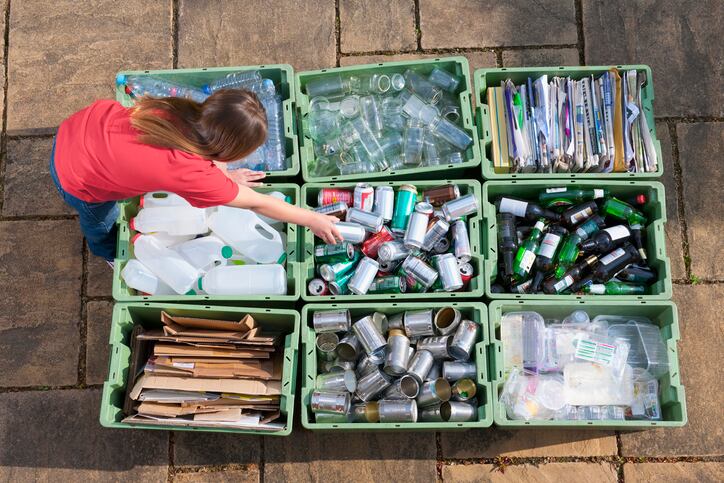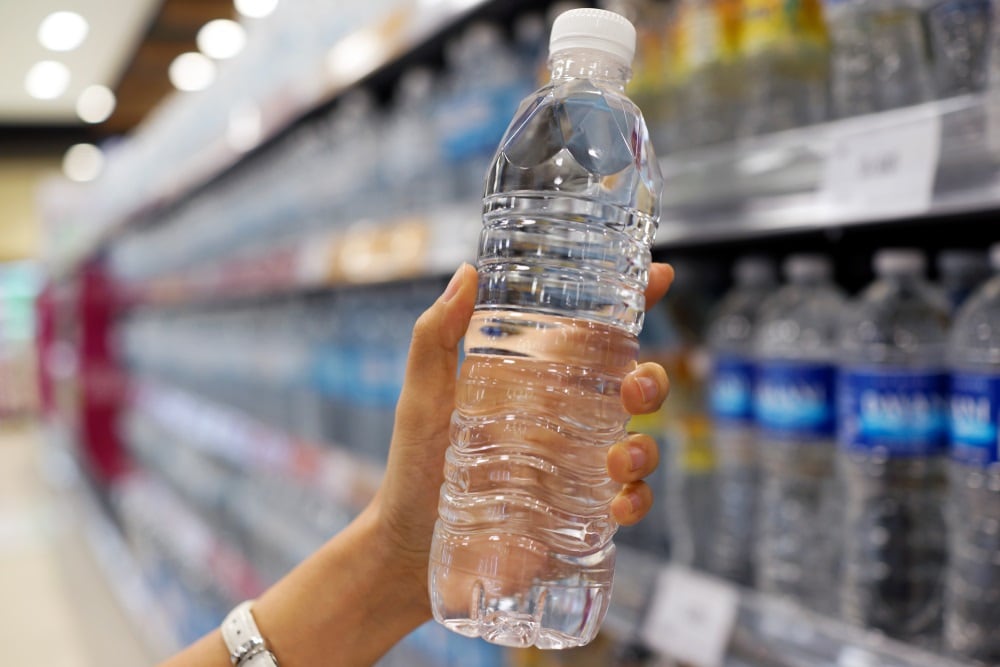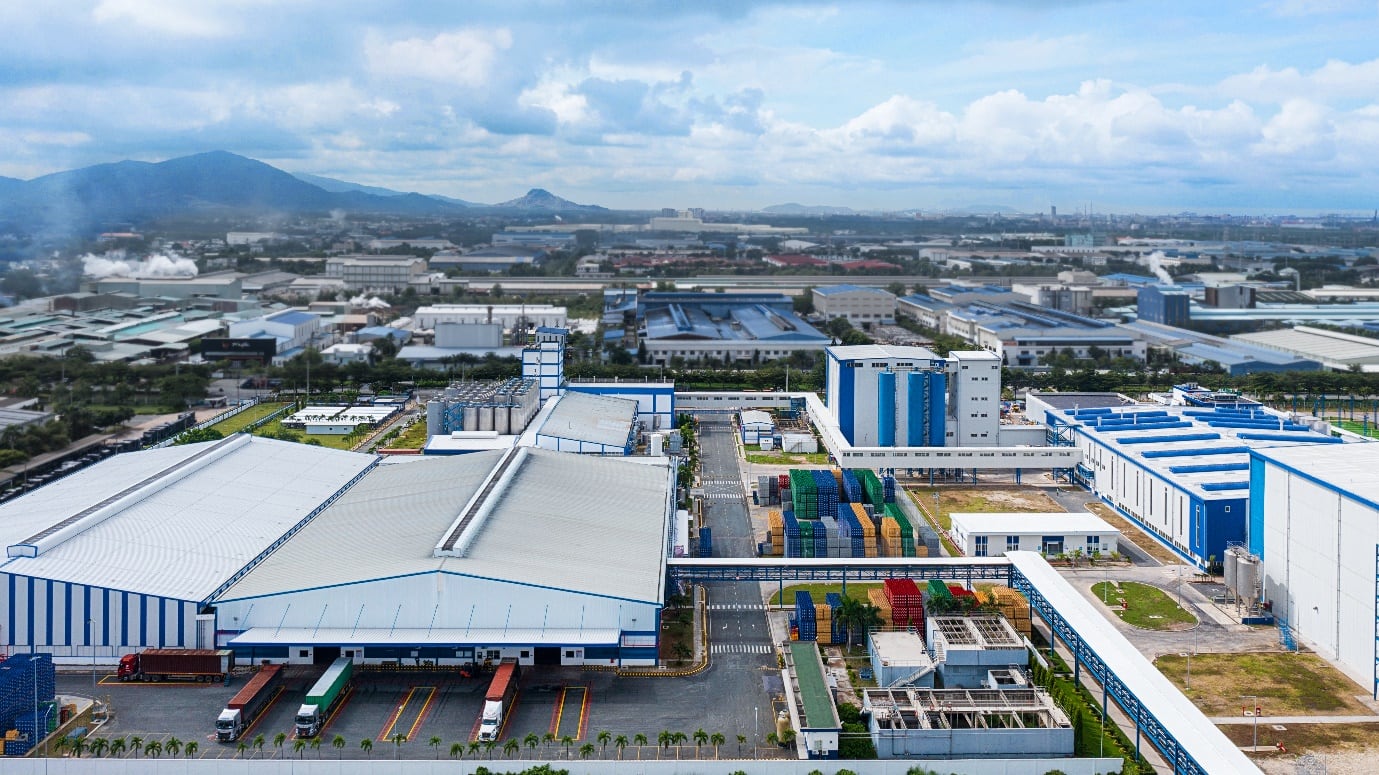As well as reducing waste and use of virgin materials, the EU wants to see the packaging sector achieve climate neutrality by 2050 in its Packaging and Packaging Waste Regulation (PPWR) proposals.
Reduce and reuse
On average, each European generates almost 180kg of packaging waste per year. It is one of the main users of virgin materials as 40% of plastics and 50% of paper used in the EU is destined for packaging.
Without action, the EU estimates it will see a further 19% increase in packaging waste by 2030, and for plastic packaging waste even a 46% increase.
The proposed revision of the EU legislation on Packaging and Packaging Waste aim to stop this trend with three main objectives: reducing packaging waste (through restricting unnecessary packaging and promoting reusable and refillable packaging); boosting ‘closed loop’ recycling (making all packaging recyclable ‘in an economically viable way’) and increasing the use of recycled plastics with mandatory targets.
But furthermore, the EU wants to do this in a way that is economically attractive and creates new business opportunities. It acknowledges that single-use packaging industries will have to invest in the transition but says ‘the overall economic and job creation impact in the EU is positive’. Boosting reuse alone will lead to more than 600,000 jobs in this sector, it estimates, while each individual European could save around €100 / $105 a year if businesses translate savings to consumers.
- The headline target is to reduce packaging waste by 15% by 2040 per Member State per capita, compared to 2018. This would lead to an overall waste reduction in the EU of some 37% compared to a scenario without changing the legislation.
- To foster reuse or refill of packaging - 'which has declined steeply in the last 20 years' - companies will have to offer a certain percentage of their products to consumers in reusable or refillable packaging, for example takeaway drinks and meals or e-commerce deliveries. There will also be some standardisation of packaging formats and clear labelling of reusable packaging.
- To address 'clearly unnecessary' packaging, certain forms of packaging will be banned (i. e.: single-use packaging for food and beverages when consumed inside restaurants and cafes, single-use packaging for fruits and vegetables, miniature shampoo bottles in hotels)
- Many measures aim to make packaging fully recyclable by 2030. This includes setting design criteria for packaging; creating mandatory deposit return systems for plastic bottles and aluminium cans; and making it clear which very limited types of packaging must be compostable so that consumers can throw these to biowaste.
- There will also be mandatory rates of recycled content that producers have to include in new plastic packaging. This will help turn recycled plastic into a valuable raw material – as already shown by the example of PET bottles in the context of the Single-Use Plastics Directive.
- The full proposals can be found here
Glass: ‘New packaging waste reduction targets must be by material’
The European Container Glass Federation welcomes the ambitions to promote recyclability and reuse of packaging – but says it is concerned that the proposed measures are not underpinned by material-specific reduction targets to ensure all packaging materials contribute ‘individually, equally and fairly to waste reduction’.
“Reduction targets should be by material, otherwise there are significant risks of shifting the market from heavier but circular, to lighter but difficult to recycle or reuse packaging materials.” says Adeline Farrelly, Secretary General of FEVE.
Furthermore, it is concerned that the proposed rules make no distinction between materials that can be recycled infinitely without loss of quality; and those which are downcycled to lower quality products.
It is also concerned on the design front: saying proposed rules will no longer permit ‘marketing’ and ‘consumer acceptance’ as legitimate packaging performance criteria if they add weight and this will drastically impact possibilities in terms of packaging design.
“Product presentation is key to brand identity and instant recognition by consumers. Primary packaging is an integral part of the product and plays a major role in consumer expectations. The overly restrictive approach to the branding role of packaging will lead to the standardisation of packaging, with far-reaching negative consequences on consumer-choice, product value, and brand identity” adds Farrelly.
But it is happy to see the idea of reuse take center stage, with the proposal introducing a reuse target for the first time. But again, it highlights that this will depend on each material.
“Refillable glass is a reality since years in Europe and it is the leading sales packaging option for a number of products in some countries. Reusable packaging can be an efficient and sustainable solution to maintain products in a short supply chain, and an important waste prevention measure, but it is not always suitable – or the optimal solution – for all product categories. It is paramount to ensure that reuse can be implemented in a safe, economically viable and environmentally sustainable way that would bring tangible benefits compared to recyclable one-way packaging.”
spiritsEUROPE: Industry needs freedom to innovate
An industry heavily dependent on glass packaging, spirits industry representative spiritsEUROPE offers its take on the proposals.
Ulrich Adam, Director General of spiritsEUROPE, said: “We welcome the choice of the Commission to opt for a Regulation rather than a Directive. It is of vital importance to us, our suppliers and the many other sectors we work with that there is consistency and a level-playing field in the application of these proposals across the EU, in particular since we have recently seen the threat of a fragmentation of the Single Market by the implementation of some country-specific measures on packaging.
“The spirits producers welcome the recognition that mandatory re-use targets for spirits are not the most suitable way forward. The sector already implements and tests new waste management models, including packaging reuse models, to deliver the best environmental outcomes. With many of the sector’s companies producing to export, with long supply chains and GI regulations and rules governing bottling in third countries, there is no “one size fits all” model from a carbon footprint /consumer safety perspective for spirits. Freedom to innovate must be given to industry to continue to invest in breakthrough packaging innovation and R&D."
But, like FEVE, spiritsEUROPE raises concerns over plans to remove “marketing” and “consumer acceptance” from the performance criteria for packaging. “We are concerned by this decision which could drastically reduce brand differentiation and product presentation which is key for our sector, a sector that does not produce ‘fast consumed’ products. As we strive to make our packaging more sustainable, the diversity of different and unique packaging designs should not be undermined by the new rules. “
spiritsEUROPE adds it welcomes and encourage the proposed use of QR codes and other digital innovations as an effective and user-friendly means of providing information to the consumer on recycled content, reuse information, etc. via digital means.
UNESDA Soft Drinks Europe: focus on food-grade materials
Non-alcoholic beverages trade association UNESDA Soft Drinks Europe says the EU’s proposal is ‘ambitious and contains several important enablers for Europe’s journey towards increased collection and recycling and the integration of more reuse.’
But it adds that further improvements are necessary to support full circularity and integrating more reuse.
“Particularly, the proposal needs to urgently address the issue of downcycling of food-grade materials into non-food-grade applications. It currently fails to include a priority access mechanism or right of first refusal that grants fairer access to the necessary amount of recycled content to those sectors that are required to use food-grade materials to comply with EU food safety requirements. This is a key enabler for further promoting closed-loop recycling, while preventing downcycling of food-grade recycled materials. Sectors that are not required to use food-grade materials must also be incentivised to invest in efficient collection and recycling systems that can achieve true circularity for their own products.
“In addition, the proposal places reuse targets only on the beverage sector and on each of its manufacturers, distributors, and in each Member State. The PPWR needs to take into account the huge diversity of economic operators in the beverage sector, the different sizes of the companies and the different types of consumption experiences of Europeans. Indeed, many businesses may become unsustainable due to an ineffective use of recycling technology investments, which will be made redundant with the necessary additional reuse investments in each country.
“There is also lack of evidence that the proposed approach for reuse targets will lead to the intended environmental outcomes. That’s why we reaffirm the need for the targets to be based on a thorough environmental and cost impact assessment to ensure that reusable beverage systems are only put in place when and where they make the most sense for our environment and are cost-efficient.”
Brewers of Europe: Methodology for measuring will be important
The Brewers of Europe says it supports the objective to minimise packaging’s impact on the environment. It highlights its ambitions for the final regulation, saying it should be:
- Proportionate: “Overly prescriptive rules or governance should not provoke the dismantling of well-functioning existing collection systems, be they well-established reuse systems set up by the brewers in many countries or efficient recycling collection systems set up in others;
- Well-targeted: “Recalling the objectives set out in the EU Circular Economy Action Plan to make “all packaging reusable or recyclable in an economically viable way”, setting reuse targets at EU level can address the reality that different countries are at varying starting points with regard to the balance between reuse and recycling;
- Non-discriminatory: “The brewing sector should not be discriminated against and it would be neither legally nor environmentally justified to a priori grant an EU-mandated exemption, from reuse targets or mandatory DRS, for other alcoholic beverages;
- Coherent: “Whilst there remain uncertainties as a number of important decisions will be defined through secondary legislation, it will be important that issues such as the methodology for measuring progress recognise that, for example, a 50l beer keg cannot be treated as a comparable unit to a bottle or can.”
Plastics Europe: Proposal could serve as ‘catalyst to transform the plastics packaging industry’ (if the investment is there…)
Plastics Europe says the proposal ‘contains many positive elements and could serve as a catalyst to transform the plastics packaging industry.’
Virginia Janssens, MD of Plastics Europe, said: “EU policy and regulation must incentivise the billions of euros of public and private investments needed to develop a circular plastics economy in Europe. This proposal could ensure the recyclability of all plastics packaging, kick-start reuse in many applications, and increase recycled content, delivering on a truly circular economy for plastics packaging in Europe.”
Plastics Europe believes that the development of Design for Recycling Guidelines, and regulation that is science-based, fully material and technology neutral is the best way to allow the market to create the required new business models, and recycling, collection and sorting technologies.
It says it is ‘open-minded’ regarding the Commission’s proposed reuse targets and needs to further assess their achievability: noting some will require a transformation of business models. “It is key that in developing these reuse targets, they are applied equally to all materials and a clear environmental benefit is demonstrated,” it says.
When it comes to recycled content, it notes that the 10% minimum recycled content is well below its own 30% target; but says that any target should be an average rather than fixed for every individual item of packaging.
And it when it comes to bio-based plastic, it voices its disappointment over the path the European Commission is taking.
“We also fear the PPWR proposal is a missed opportunity for the Commission to boost the potential of bio-based plastics in contributing to circular feedstock targets while reducing emissions.”




